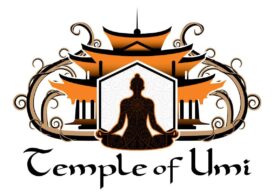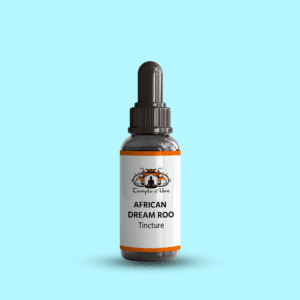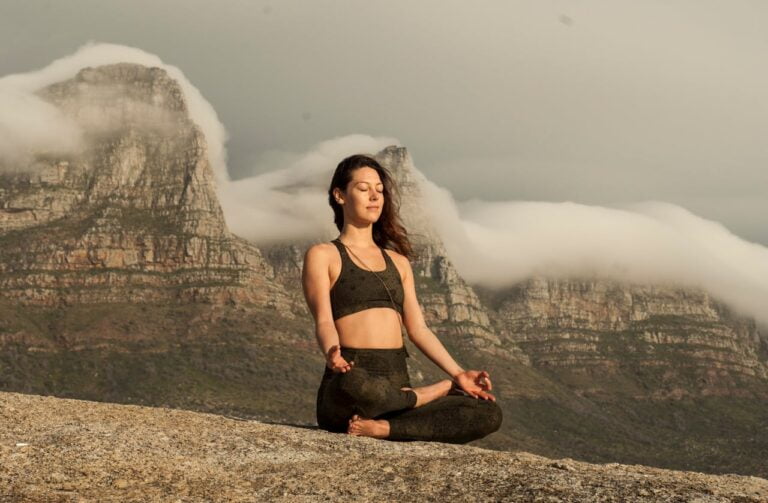Explore the transformative benefits of meditation exercises in our concise conclusion. Find encouragement to personalize your meditation practice and make it a lifelong journey toward better mental and physical well-being.
Introduction to Meditation Exercises
Meditation exercises are structured practices that guide the mind to focused relaxation through various techniques. Meditation is important because it can help individuals achieve a more transparent, calmer, and centered mental state, leading to numerous health benefits.
- Definition of Meditation: Meditation involves engaging in mental exercises, such as concentrating on a particular point of reference or systematically directing the mind to achieve a tranquil and deep peace.
- Importance of Meditation: Regular meditation exercises can enhance emotional health, reduce stress, manage anxiety, and foster a strong sense of presence and awareness.
The benefits of incorporating meditation into daily life are substantial and multifaceted:
- Improved Mental Health: Regular meditation exercises can help decrease depression and anxiety levels.
- Enhanced Concentration: Meditation helps sharpen the mind and increase attention span.
- Stress Reduction: Meditation exercises can significantly lower stress levels by fostering relaxation.
- Better Sleep: Regular practice of meditation exercises can contribute to improved sleep patterns and quality.
- Physical Health: Meditation has been linked to lowered blood pressure, improved heart rate, and a more robust immune system.
Preparing for Meditation
Effective meditation requires an environment that promotes relaxation and focus. Preparing adequately for meditation can enhance the experience and make it more beneficial.
Choosing a Quiet and Comfortable Space: Select a dedicated space for meditation exercises where interruptions are minimized. This could be a quiet corner of your home, a private room, or a seldom-disturbed area.
Setting the Right Atmosphere:
- Lighting: Soft, soothing lighting can help create a calming atmosphere. Dim lights or candles are often recommended.
- Sounds: Background noise should be minimized. Consider gentle, soft music signature sounds if complete silence isn’t possible.
- Seating: Comfort is key in meditation. Use a comfortable chair, meditation cushion, or mat, depending on your preference.
Tips for Scheduling Regular Meditation Sessions:
- Consistency: Try to meditate at the same time each day to establish a routine.
- Duration: Start with short sessions of about 5-10 minutes and gradually increase the time.
- Integration: Integrate meditation into your daily schedule in natural ways, such as in the morning, before bedtime, or after work.
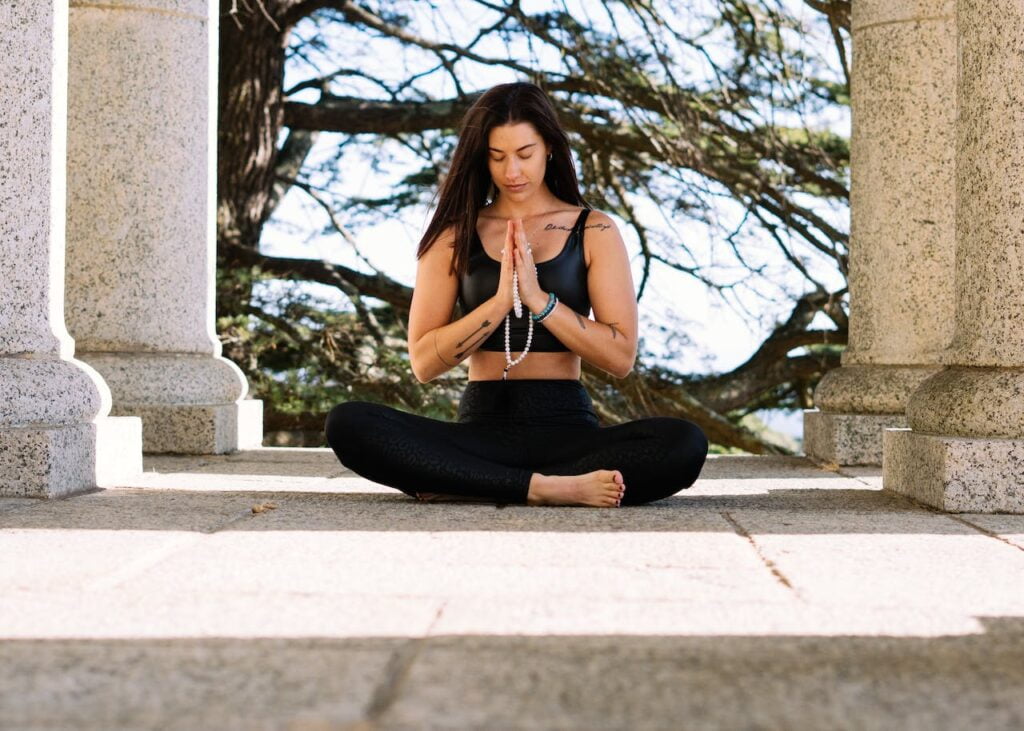
Types of Meditation Exercises
Meditation exercises can be classified into several types, each with unique methods and benefits that cater to different goals and preferences. Here is a look at some of the most effective meditation exercises:
Mindfulness Meditation: This practice involves cultivating active, open attention to the present moment. Mindfulness meditation practitioners can gain a deeper awareness and acceptance of the present by observing thoughts, feelings, and sensations without judgment.
- Sit or lie comfortably and close your eyes.
- Focus solely on your breathing, observing each inhale and exhale without attempting to control it.
- When thoughts come, acknowledge them and return focus to your breath.
Guided Meditation: Often led by a narrator or teacher, this form of meditation involves following verbal instructions that lead you through a meditative experience.
- Use an app or a video from a trusted instructor.
- Follow the verbal cues to visualize relaxing scenes or journeys.
- Allow the guided imagery to help you achieve a state of relaxation and focus.
Breathing Exercises are fundamental to many forms of meditation. They involve controlling the breath to induce relaxation.
- Find a quiet place to sit or lie down comfortably.
- Focus on slow, deep breaths through the nose and mouth.
- Use counting to help maintain a rhythm and enhance concentration.
Movement Meditation is ideal for those who find peace in action and prefer to incorporate gentle movements into their practice.
- Engage in yoga or go for a mindful walk.
- Sync your movements with your breathing to maintain mindfulness.
- Embrace the fluid motions and the sensation of each movement.
Step-by-Step Guide to Basic Meditation Exercise
Starting with meditation can seem daunting at first, but with a simple step-by-step approach, you can begin to incorporate this valuable practice into your life:
Finding a Comfortable Posture:
- Sit on a chair or the floor with your back straight and hands resting on your knees or lap.
- Alternatively, you can lie down if it helps you feel more relaxed.
Focusing on the Breath:
- Close your eyes to minimize external distractions.
- Concentrate on your breathing; observe the sensation of air entering and leaving your nostrils.
- Try to breathe naturally without forcing it.
Handling Distractions and Refocusing:
- Acknowledge any external sounds, sensations, or thoughts without engaging with them.
- Gently redirect your attention to your breath whenever you notice your mind wandering.
Concluding the Session and Reflecting on the Experience:
- After 5-10 minutes, or longer if you prefer, gently open your eyes and take a moment to notice any sounds in the environment.
- Reflect on the meditation experience, noting any difficulties or remarkably serene moments.
Meditation Exercises for Specific Goals
Stress Reduction: Exercises Designed to Alleviate Stress
- Deep Breathing Meditation: Begin by finding a comfortable seated position and focusing solely on breathing. Inhale deeply through your nose, hold for a count of three, and exhale slowly through your mouth. This exercise helps reduce the stress hormone cortisol and promotes relaxation.
- Progressive Muscle Relaxation: This technique involves tensing each muscle group in your body for a few seconds and then releasing them. It is particularly effective for relieving physical tension associated with stress.
Enhancing Concentration: Techniques to Improve Focus and Attention
- Focused Attention Meditation: Choose a point of focus, such as your breath or a specific object. When your mind wanders, gently redirect your attention to your chosen focus. This practice enhances your ability to concentrate over time.
- Counting Breaths: Sit in a quiet space and focus on counting your breaths. This simple technique can help train your brain to stay focused, making it easier to maintain concentration during daily activities.
Emotional Healing: Meditations for Overcoming Emotional Distress
- Loving-Kindness Meditation: Repeat phrases of goodwill and kindness towards yourself and others. This practice can help foster positive emotions and reduce feelings of emotional distress.
- Mindfulness Meditation: Observe your thoughts and emotions without judgment. This helps you understand your emotional patterns and fosters greater peace and resilience.
Sleep Improvement: Relaxation Techniques for Better Sleep
- Guided Imagery: Before bed, listen to guided imagery exercises designed to calm the mind and prepare the body for sleep. Visualize a peaceful scene, such as a quiet beach at sunset, to help reduce bedtime anxiety.
- Body Scan Meditation: Focus on each body part from your toes and upwards. This practice not only relaxes the body but also quiets the mind, making it easier to fall asleep.
Advanced Meditation Techniques
Mantra Meditation: Using Repetitive Sounds to Deepen Meditation
- Choosing Your Mantra: Select a word or phrase that is meaningful to you. Repeat the mantra silently or aloud to anchor your mind and deepen your meditation experience.
- Synchronized Breathing: Integrate your breathing with your mantra chanting, inhaling as you say one part of the mantra and exhaling on the other. This synchronization enhances the meditative state.
Chakra Meditation: Focusing on Energy Centers in the Body
- Visualization of Chakras: Visualize each chakra in your body, from the root to the crown. Imagine a wheel spinning in each energy center, glowing with vibrant colors associated with each chakra.
- Balancing Techniques: Use specific sounds, colors, or visualization techniques to balance and open each chakra, promoting better energy flow and well-being.
Visualization Techniques: Imagining Calming and Healing Scenes
- Nature Visualizations: Picture yourself in a tranquil natural setting, like a forest or a mountain lake. Use all your senses to deepen the experience, imagining the sounds of nature, the scent of trees, and the feel of the air.
- Healing Visualizations: Imagine a healing light or energy moving through your body, targeting areas of pain or illness. Visualize this light, restoring health and vitality to affected areas.
Integrating Meditation into Everyday Life
Incorporating meditation exercises into your daily routine can significantly enhance your quality of life, even amidst a busy schedule. Here is how to weave this ancient practice into the fabric of your modern life:
Short Meditations for Busy Schedules:
- Begin with just five minutes a day. Dedicate these minutes in the morning or evening to sit quietly and focus on your breath.
- Use moments of waiting—like during a commute or waiting for your computer to start up—to practice mindful breathing or body scans.
- Regularly schedule these short sessions; consistency is more impactful than duration.
Using Meditation to Enhance Productivity and Creativity:
- Before starting a work session, take a few minutes to meditate, clearing your mind to enhance focus and open up to creative ideas.
- Incorporate mini-meditation breaks throughout your workday to reset your attention and reduce mental fatigue.
- Engage in guided meditation exercises designed to foster problem-solving and innovative thinking.
Mindful Eating and Other Mindfulness Practices:
- Practice mindful eating by paying full attention to your food’s flavor, texture, and aroma, which can enhance digestion and prevent overeating.
- Extend mindfulness to everyday activities like showering, brushing your teeth, or walking. Focus on the sensations and movements involved.
- Use mindfulness bells on your phone or computer to remind you to pause and breathe throughout the day. Learn more.
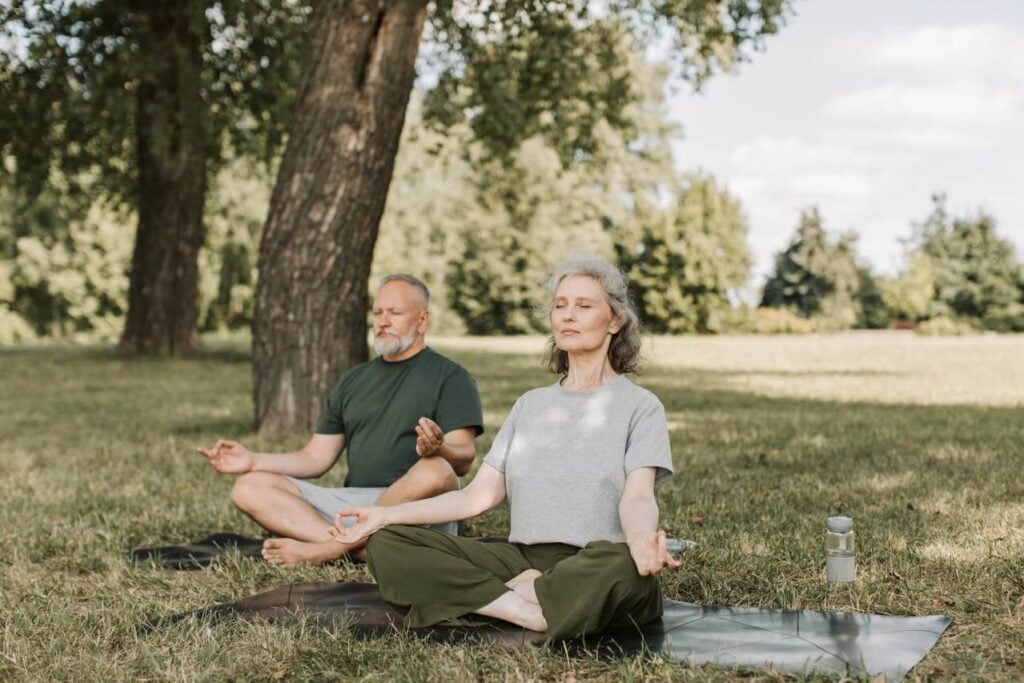
Final words
Meditation exercises offer many benefits that can transform mental and physical health. As we’ve explored:
Recap of the Benefits and Types of Meditation Exercises:
- Meditation exercises are powerful for personal well-being, from reducing stress and enhancing focus to improving emotional stability and physical health.
- Various types of meditation, such as mindfulness, guided meditation, and breathing exercises, provide multiple pathways to harness these benefits.
Encouragement to Explore and Adapt Meditation for Personal Needs:
- There is no one-size-fits-all approach to meditation. Experiment with different types and lengths of meditation to find what best suits your lifestyle and preferences.
- Be patient with yourself as you embark on this journey, and allow your meditation practice to evolve.
Final Thoughts on Making Meditation a Lifelong Practice:
- Consider meditation not just a technique but a way of life. Embedding this practice into daily life can lead to profound insights and sustainable peace.
- Regular practice is crucial in reaping the full benefits, transforming occasional meditation into a consistent, rewarding part of your life.
